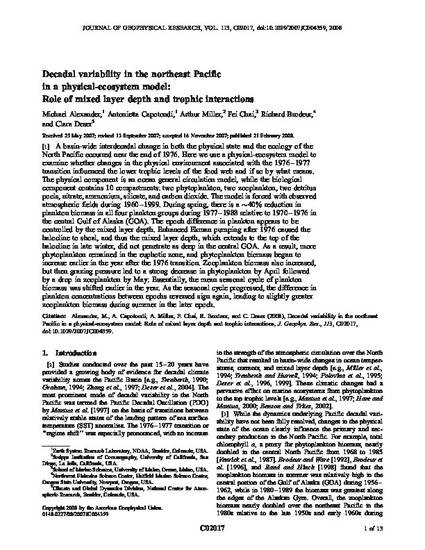
A basin-wide interdecadal change in both the physical state and the ecology of the North Pacific occurred near the end of 1976. Here we use a physical-ecosystem model to examine whether changes in the physical environment associated with the 1976-1977 transition influenced the lower trophic levels of the food web and if so by what means. The physical component is an ocean general circulation model, while the biological component contains 10 compartments: two phytoplankton, two zooplankton, two detritus pools, nitrate, ammonium, silicate, and carbon dioxide. The model is forced with observed atmospheric fields during 1960-1999. During spring, there is a similar to 40% reduction in plankton biomass in all four plankton groups during 1977-1988 relative to 1970-1976 in the central Gulf of Alaska (GOA). The epoch difference in plankton appears to be controlled by the mixed layer depth. Enhanced Ekman pumping after 1976 caused the halocline to shoal, and thus the mixed layer depth, which extends to the top of the halocline in late winter, did not penetrate as deep in the central GOA. As a result, more phytoplankton remained in the euphotic zone, and phytoplankton biomass began to increase earlier in the year after the 1976 transition. Zooplankton biomass also increased, but then grazing pressure led to a strong decrease in phytoplankton by April followed by a drop in zooplankton by May: Essentially, the mean seasonal cycle of plankton biomass was shifted earlier in the year. As the seasonal cycle progressed, the difference in plankton concentrations between epochs reversed sign again, leading to slightly greater zooplankton biomass during summer in the later epoch.
Available at: http://works.bepress.com/fei_chai/12/
